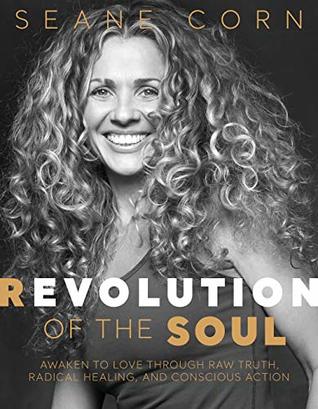More on this book
Kindle Notes & Highlights
by
Seane Corn
Read between
September 29, 2019 - September 8, 2020
AHIMSA (NON-HARMING)
begin with ahimsa,
felt I had to look, act, and be a certain way in order for people to love me. This is called ego — the ways in which we identify ourselves and declare to ourselves and the world around us: “This is who I am.”
Practicing ahimsa helps us trust that what makes us valued as a soul isn’t about how we look or what we accomplish, but how we treat others and how we honor ourselves.
love as a primordial force that sustains, uplifts, and connects all souls to one another.
Ahimsa also means non-judgment,
understanding how your actions and thoughts can either cause suffering or alleviate it.
SATYA (TRUTHFULNESS)
satya means “seeing and reporting things as they are rather than the way we would like them to be.
to only tell the truth if you can tell it with clarity, kindness, and compassion
had subconsciously crafted a persona I wanted the world to see, one in which I was charming, cute, a little cocky, and doing just fine, thank you very much.
the self I had constructed actually kept me separate from others and contributed mightily to the loneliness and anxiety that plagued me from time to time.
Is it in fact true? Is it necessary? Is it kind? Is it useful?
Satya asks us to stop lying to ourselves as well, to commit to discovering the truth of who we really are, by gently and tenderly polishing the lens through which we can understand the narratives that live in our bodies.
being truthful feels lighter, freer, and, in the end, more liberating.
ASTEYA (NON-STEALING)
I stole affection from would-be lovers because I was bored, insecure, anxious, and afraid — without realizing how my actions were harming both me and them.
not stealing away someone’s affections when you have no intention of reciprocating,
So much of this, the wise old yogis say, happens when you feel insecure, lonely, or fearful.
fill the void by pretending to be someone you’re not, hoping to gain the attentio...
This highlight has been truncated due to consecutive passage length restrictions.
You steal from yourself when you minimize your own troubles, shaking them off as no big deal; beat yourself up for thinking you suffer in the first place when so many others are worse off; or when yo...
This highlight has been truncated due to consecutive passage length restrictions.
generosity and gratitude, it’s about learning to say yes, and it’s a reminder that you are enough — that you have...
This highlight has been truncated due to consecutive passage length restrictions.
BRAHMACHARYA (TURNIN...
This highlight has been truncated due to consecutive passage length restrictions.
“walking in the presence of God” or “walking in God-consciousness,” which means turning inward and not depending on sensual pleasures or outside stimulation to bring you joy. When you act with God-consciousness, you are less likely to make impulsive, self-indulgent decisions that aren’t very mindful.
practicing brahmacharya focuses the mind on the task at hand and helps us dedicate our energies to both our inner work and our work in the world.
APARIGRAHA (NON-G...
This highlight has been truncated due to consecutive passage length restrictions.
non-grasping or non-possessiveness,
bring material things into your life consciously, engaging with them in a way that supports your highest values.
Aparigraha can also mean holding on to people in your life, ideas about yourself, false identities, jobs, and other things long past their “expiration” date.
never enough.
yoga is now
But practicing the precepts (the yamas and niyamas) when people are different? Or assholes? Or when you’re an anxious mess and your life is in shambles? Not
It’s all yoga, and it’s all purposeful for the evolution of your soul.
Yoga opens our eyes so we can see clearly who we are and who we are to each other. This awakening gives us permission to be more joyous, connected, understanding, compassionate, and loving, right here, right now.
actually four paths of yoga, which meant four different ways to become enlightened.
strictly devotional (bhakti),
centered on knowledge...
This highlight has been truncated due to consecutive passage length restrictions.
dedicated to service or acti...
This highlight has been truncated due to consecutive passage length restrictions.
fourth (raja) focused mainly on...
This highlight has been truncated due to consecutive passage length restrictions.
about how my behaviors impacted my physical health.
still have no sense of purpose, but somehow I know it will all work out.
steadiness and peace that comes from simply being.
tend to my own humanity
the light parts as well as the shadow parts I didn’t want to acknowledge.
This journey is the evolution ...
This highlight has been truncated due to consecutive passage length restrictions.
Yoga calls these layers koshas, or sheaths, a reminder that we are more than just the physical body we can see and touch. We are body, breath, mind, intuition, and radiant awareness.
As a body-based meditation, yoga invites us to focus, stabilize, and move with more awareness. Nothing within us stands alone —
The physical cleansing of the body is a vital step on the spiritual path toward wholeness, because, as B.K.S. Iyengar, the leading authority in contemporary yoga, used to say, “You can’t build a temple on quicksand.”
Being in the annamaya kosha can show you where your tension is held and give you a glimpse of what may lie buried under that tension — the traumas and the suffering you may have been harboring for many lifetimes.
focusing on the body is quite different from becoming attached to what it can do.


